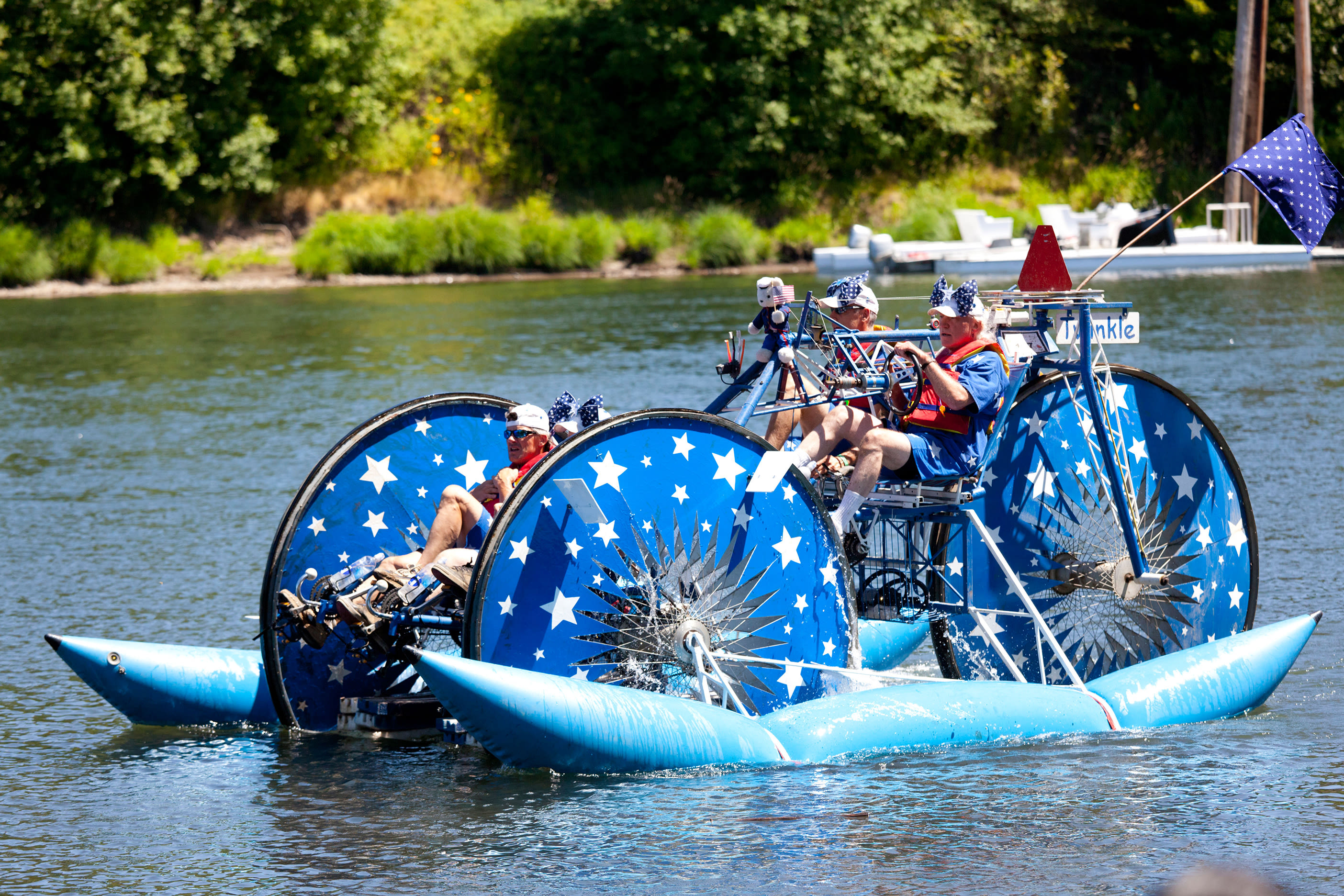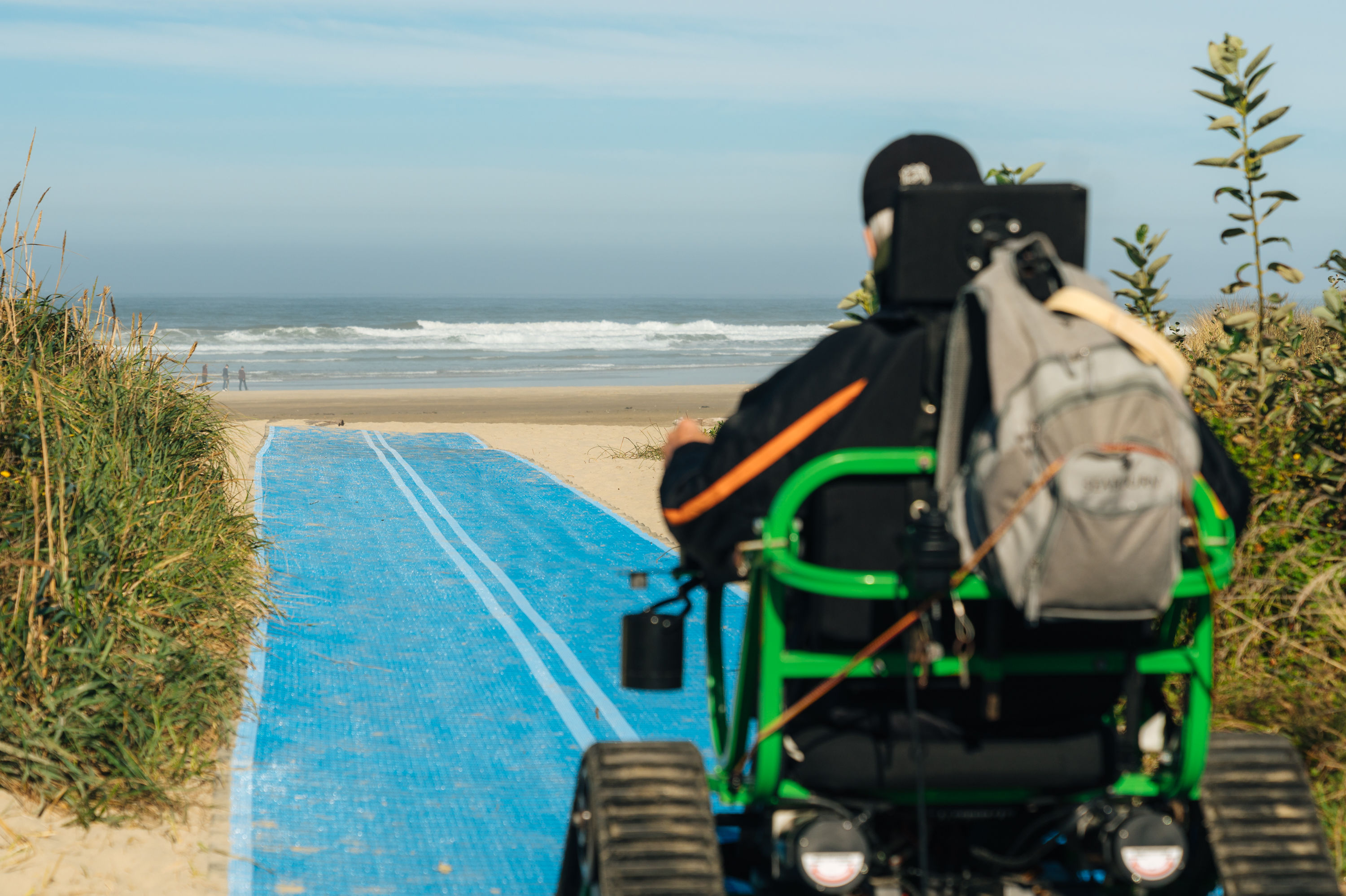Beach Bums

Image: David Wong
A LOW CLOUD BANK blocks out the sun, making the brackish water I’m bobbing in near Cannon Beach feel even colder. Beside me, a fellow surfer grimaces when a whitecap crashes over him.
“Damn cold, isn’t it?” I say.
He grins. “Yeah, and the water out here is getting colder,” he says. “That’s why all these salmon sharks are coming so close to shore.”
A chill zips through my wet suit. I’m not entirely sure what a salmon shark is, but it sounds like a sharp-toothed something that I don’t want to meet. (Don’t worry, these North Pacific residents, which resemble small great whites, prefer to use their choppers to feast on salmon.)
“Really?” I ask.
They’re attracted to the cold water, he explains. I think about asking him just how big a salmon shark can get (about 10 feet), but I’d rather keep surfing. After all, what does some surfer dude know about sharks?
A lot, it turns out.
“Frankly, I’m surprised at the accuracy of his reporting,” says Bill Hanshumaker, a senior instructor at Hatfield Marine Science Center and the Northwest Fisheries Science Center (NFSC) in Newport, noting that the waters close to shore are the coldest they’ve been in 15 years.
The frigid conditions coincide with a rash of dead salmon-shark pups washing up on Oregon shores. This summer 10 juvenile salmon sharks were found on the north coast, and another 6 on the central coast. Hanshumaker isn’t sure why the sharks are dying (one theory suggests it could be related to disease), but he says the carcasses might mean that these normally deep-water sharks are now buzzing the beach.
NFSC oceanographer Bill Peterson believes the sightings may be tied to a natural ocean current cycle dubbed the Pacific Decadal Oscillation. The current courses south from the Gulf of Alaska every five years or so, and it can lower our coastal waters’ temperature by a couple of degrees—from around 51 degrees to 48 or so, temperatures typically found in deeper water. The current also acts as a kind of oceanic gravy train: It’s rich in tiny creatures called copepods, which river-bound salmon love to devour.
Salmon sharks sometimes lurk just beyond the breakers, where surfers bob, but Hanshumaker, a surfer himself, isn’t worried about being bitten.
“I can’t imagine it,” he says, pointing out that though their size might make them spooky, the sharks aren’t known to be aggressive toward humans.
In fact, there’s never been a recorded salmon shark attack on the Oregon Coast. And while Hanshumaker acknowledges the drop in water temperatures and the rise in shark sightings, he isn’t willing to connect the two just yet. “It’s not even a hypothesis right now,” he says. And he doesn’t have enough data on the sharks or the ocean temperatures to pursue the theory. “It’s just a wild hairy guess.”
That doesn’t make the prospect of dangling my neoprene-clad feet in that cold, potentially shark-filled water exactly comforting, but then again, since when has surfing in Oregon been comfortable?




